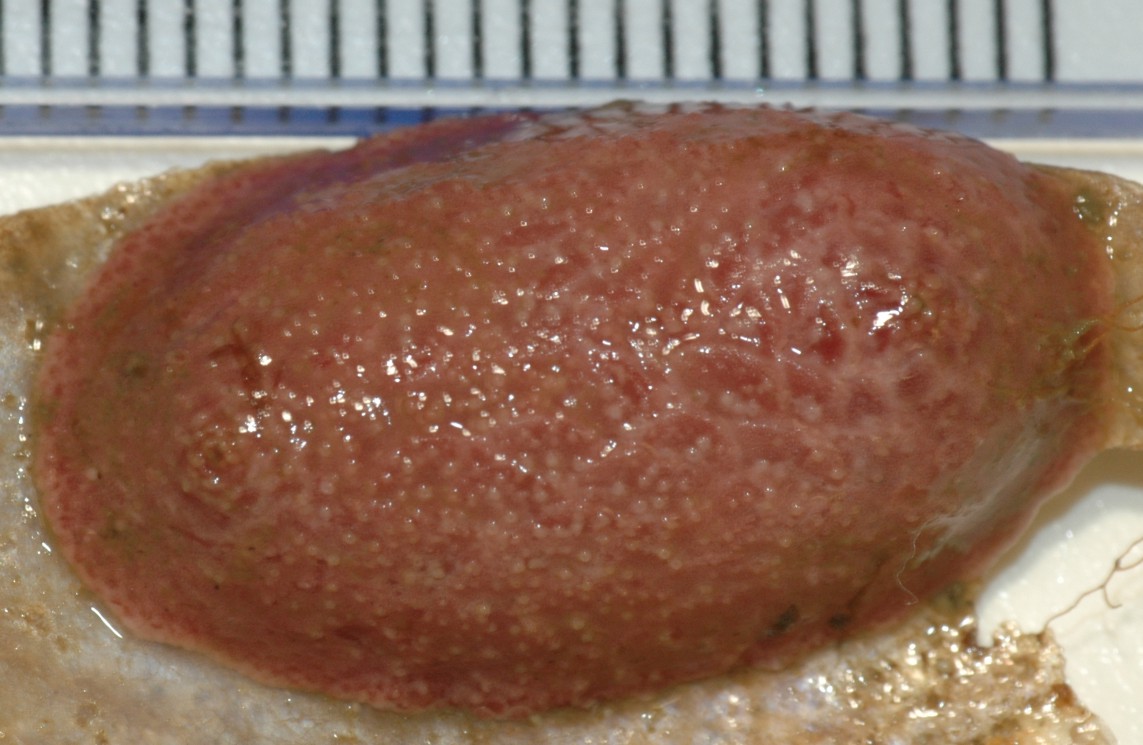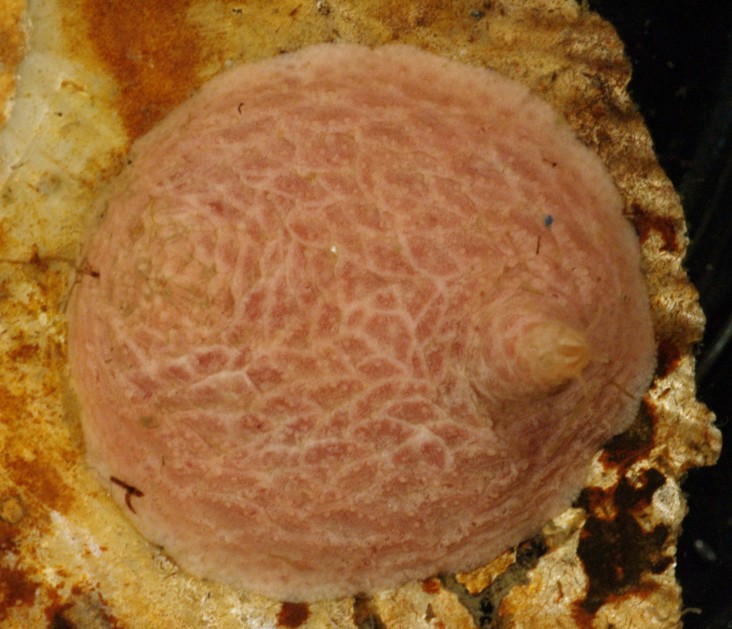Psolidium bidiscum Lambert, 1996Common name(s): Pale creeping pedal sea cucumber |
|
| Synonyms: Formerly thought to be Psolidium bullatum |  |
| Phylum Echinodermata
Subphylum Eleutherozoa Superclass Cryptosyringida Class Holothuroidea Order Dendrochirotida Family Psolidae |
|
| Psolidium bidiscum from off Northwest Island at about 12 m depth. Scale = mm | |
| (Photo by: Dave Cowles, July 2005) | |
How to Distinguish from Similar Species: Psolus chitonoides, a much more obvious species, is much larger, has plates over 5 mm in diameter which have no nodules. Psolus squamatus also grows larger (6 cm) and is not pinkish or lavender.
Geographical Range: SE Alaska to central CA (Harbo, 1999).
Depth Range: Intertidal to 216 m; mostly subtidal. Recorded intertidally on one occasion in Hood Canal
Habitat: On rocks
Biology/Natural History: This species, newly described, was formerly thought to be Psolidium bullatum, which is nown known only from the Aleutian Islands and the Gulf of Alaska. Spawning is from late March to early May. The anterior end lifts up slightly, and the female releases up to 3000 golden yellow to light brown-orange eggs. Mature gonads can be seen through the sole: ovaries are tan and testes are white.
| Return to: | |||
| Main Page | Alphabetic Index | Systematic Index | Glossary |
References:
Dichotomous Keys:Flora and Fairbanks, 1966 (as Psolidium bullatum)
Kozloff 1987, 1996 (as Psolidium bullatum)
General References:
Harbo,
1999
Kozloff,
1993
Lambert,
1997
Scientific Articles:
Web sites:
General Notes and Observations: Locations, abundances, unusual behaviors:
I have found a number of specimens of this species around Rosario, especially on old shells such as are found in Octopus middens. We also find them on deep (around 100 m) trawls in the San Juan Channel.

This closeup of the anterior end shows the small oral tentacles around
the mouth. Two tentacles are currently folding inside the
mouth,
probably for feeding.

This individual is living on the inside of a dead scallop shell.
Authors and Editors of Page:
Dave Cowles (2005): Created original page